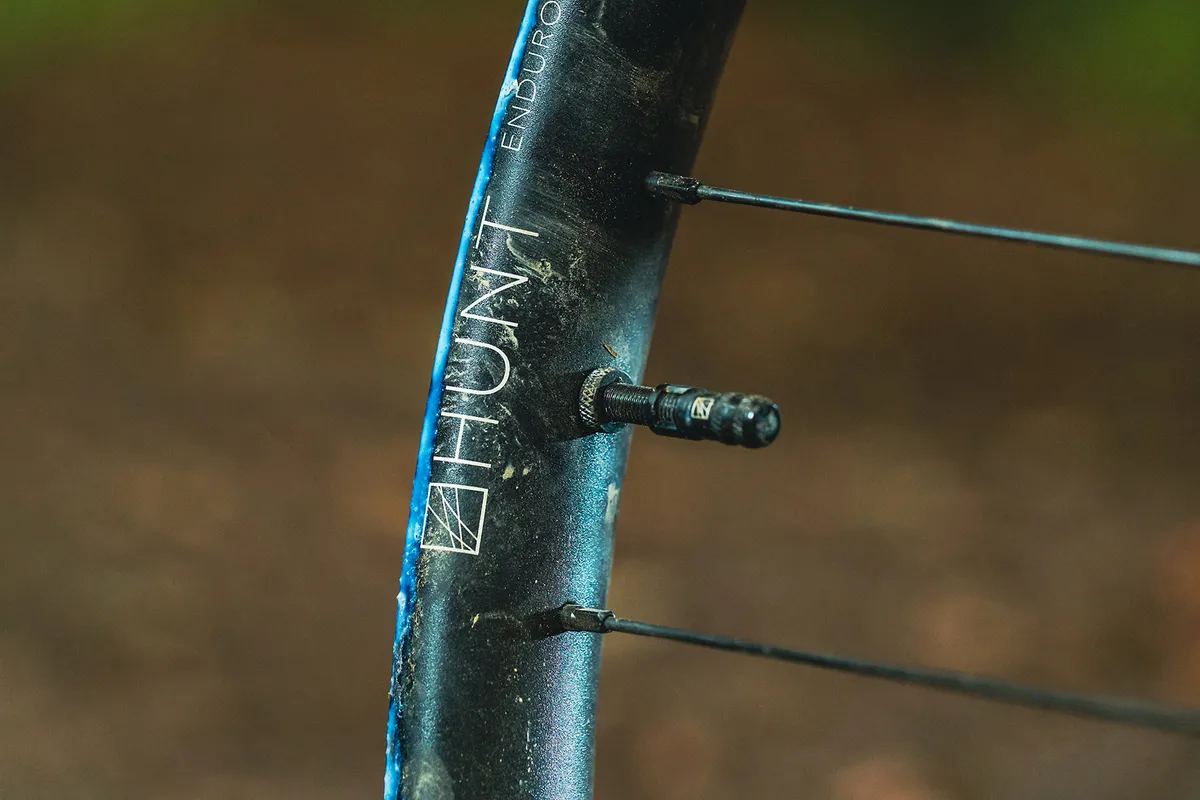When looking at a new mountain bike, it’s easy to give a nod of approval to the frame, fork, drivetrain or brakes. But it’s often the finishing touches that really ‘make’ a bike.
We’ve thought about the components that rarely hog the limelight, but really deserve some time centre stage.
In turn, this is an appreciation of the rarely praised product manager – the person who’s ridden test mules, studied spec offerings and picked some truly praiseworthy components.
1. SDG Bel Air saddle

Specced on the likes of Orange, Transition and YT bikes, the SDG Bel Air is one of the best mountain bike saddles, that flies under the radar.
Measuring 142mm wide and 260mm long, the Bel Air has fairly neutral dimensions.
There are loads of options available, with steel, alloy and carbon rails, as well as a whole host of colours and designs.
It’s safe to say choosing the right bike saddle is a very personal question, but we’re always pleased to see an SDG specced on a test bike.
2. Integrated multi-tools

Integrated multi-tools are amazing.
After testing bikes such as the Specialized Enduro, which comes with a steerer-mounted SWAT tool as standard, we always rejoice when we see more bike brands introducing integrated multi-tools to their range.
However, not all multi-tool integrations are made equal. Tools mounted near the bottom bracket or underneath the saddle are in the firing line of water, grit and grime as you ride. For us, the steerer tube is where it’s at.
3. SRAM HS2 rotors

The SRAM HS2 is one of the very best disc brake rotors out there.
By increasing the rotor thickness to 2mm, up from 1.85mm, on the CentreLine model, SRAM claims it made the HS2 seven per cent more powerful and 40ºC cooler when tested back to back with the CenterLine disc.
4. Up-specced shifters

It’s quite common to see mountain bikes with a higher-spec rear derailleur than the rest of the drivetrain. For example, a SRAM GX derailleur paired with an NX shifter.
This tactic enables manufacturers to save money on the shifter while still speccing an eye-catching derailleur.
However, the shifting performance suffers considerably, so we’re always happy to see bikes that come with the same spec level across the whole drivetrain.
5. Lock-on grips

Contact points are crucial. A good pair of lock-on mountain bike grips makes a world of difference, especially when riding in the wet where slide-on grips often turn into deathly spinning throttles.
6. SRAM Guide RE brake

The SRAM Guide RE is, in theory, quite an old brake.
Originally aimed at budget-conscious electric mountain bikes, it combines SRAM’s Guide R lever with a previous-generation Code downhill caliper.
This combination makes for an affordable brake that has more power than a standard Guide R, but is lighter and cheaper than a Code R.
7. Fully-sheathed internal cable routing

While this isn’t a component in itself, it’s always great to see new bikes specced with fully sheathed internal cable routing.
Tube-in-tube routing makes swapping cables a breeze and really capitalises on the benefits of internal cable routing by delivering a clean look with hassle-free maintenance.
8. Valve caps with integrated valve core tools

There’s nothing worse than a loose valve core slowly leaking air as you ride or a screw-on mini pump taking the valve stem out as you remove it from your wheel.
In such cases, having a valve cap with an integrated core tool is a lifesaver. Brands such as Peaty’s, Hunt Wheels, Privateer and DT Swiss, among others, are on the case already and we’d love to see more adopt this small but valuable detail.

